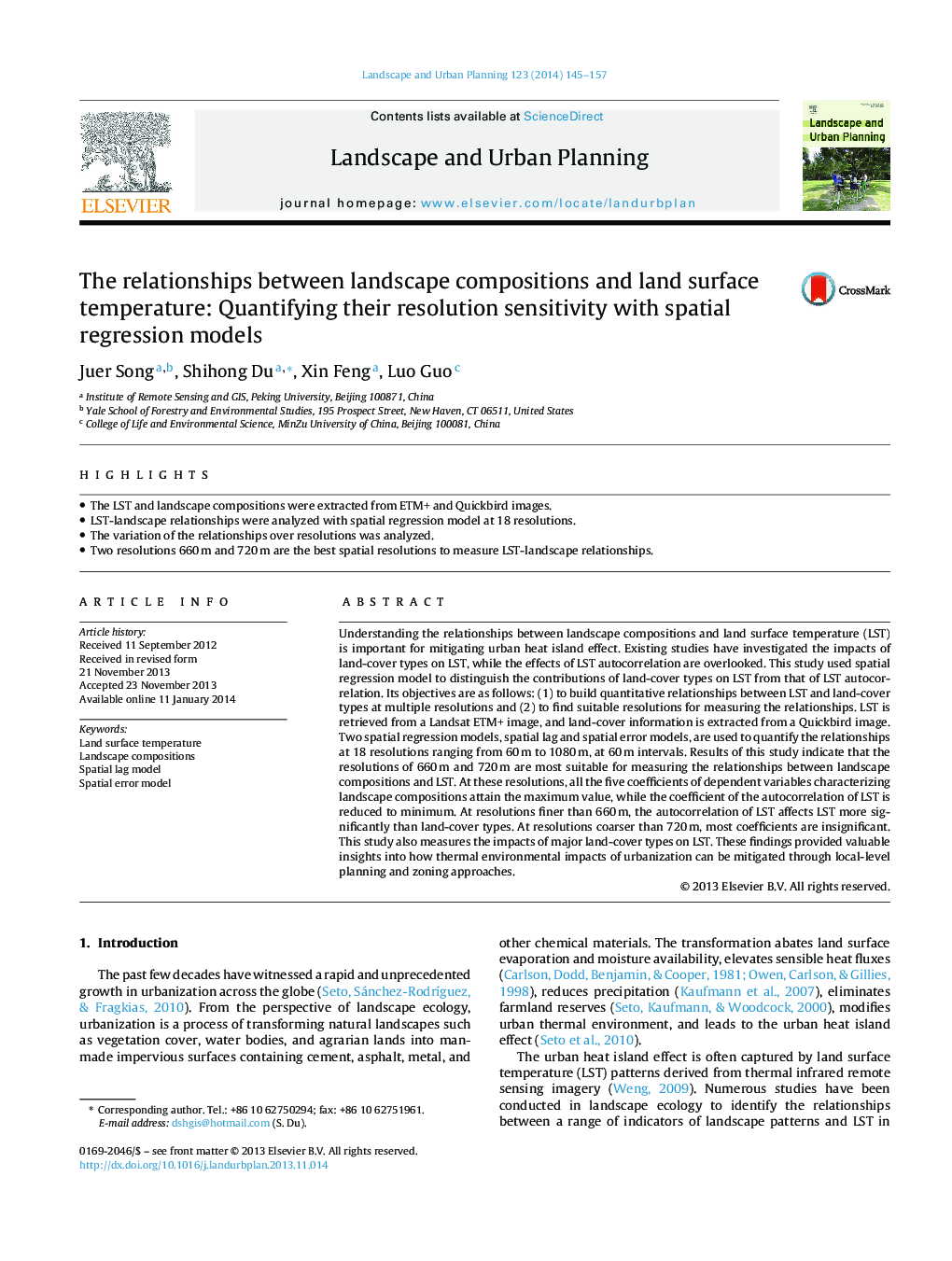| Article ID | Journal | Published Year | Pages | File Type |
|---|---|---|---|---|
| 7461722 | Landscape and Urban Planning | 2014 | 13 Pages |
Abstract
Understanding the relationships between landscape compositions and land surface temperature (LST) is important for mitigating urban heat island effect. Existing studies have investigated the impacts of land-cover types on LST, while the effects of LST autocorrelation are overlooked. This study used spatial regression model to distinguish the contributions of land-cover types on LST from that of LST autocorrelation. Its objectives are as follows: (1) to build quantitative relationships between LST and land-cover types at multiple resolutions and (2) to find suitable resolutions for measuring the relationships. LST is retrieved from a Landsat ETM+ image, and land-cover information is extracted from a Quickbird image. Two spatial regression models, spatial lag and spatial error models, are used to quantify the relationships at 18 resolutions ranging from 60Â m to 1080Â m, at 60Â m intervals. Results of this study indicate that the resolutions of 660Â m and 720Â m are most suitable for measuring the relationships between landscape compositions and LST. At these resolutions, all the five coefficients of dependent variables characterizing landscape compositions attain the maximum value, while the coefficient of the autocorrelation of LST is reduced to minimum. At resolutions finer than 660Â m, the autocorrelation of LST affects LST more significantly than land-cover types. At resolutions coarser than 720Â m, most coefficients are insignificant. This study also measures the impacts of major land-cover types on LST. These findings provided valuable insights into how thermal environmental impacts of urbanization can be mitigated through local-level planning and zoning approaches.
Related Topics
Life Sciences
Agricultural and Biological Sciences
Ecology, Evolution, Behavior and Systematics
Authors
Juer Song, Shihong Du, Xin Feng, Luo Guo,
